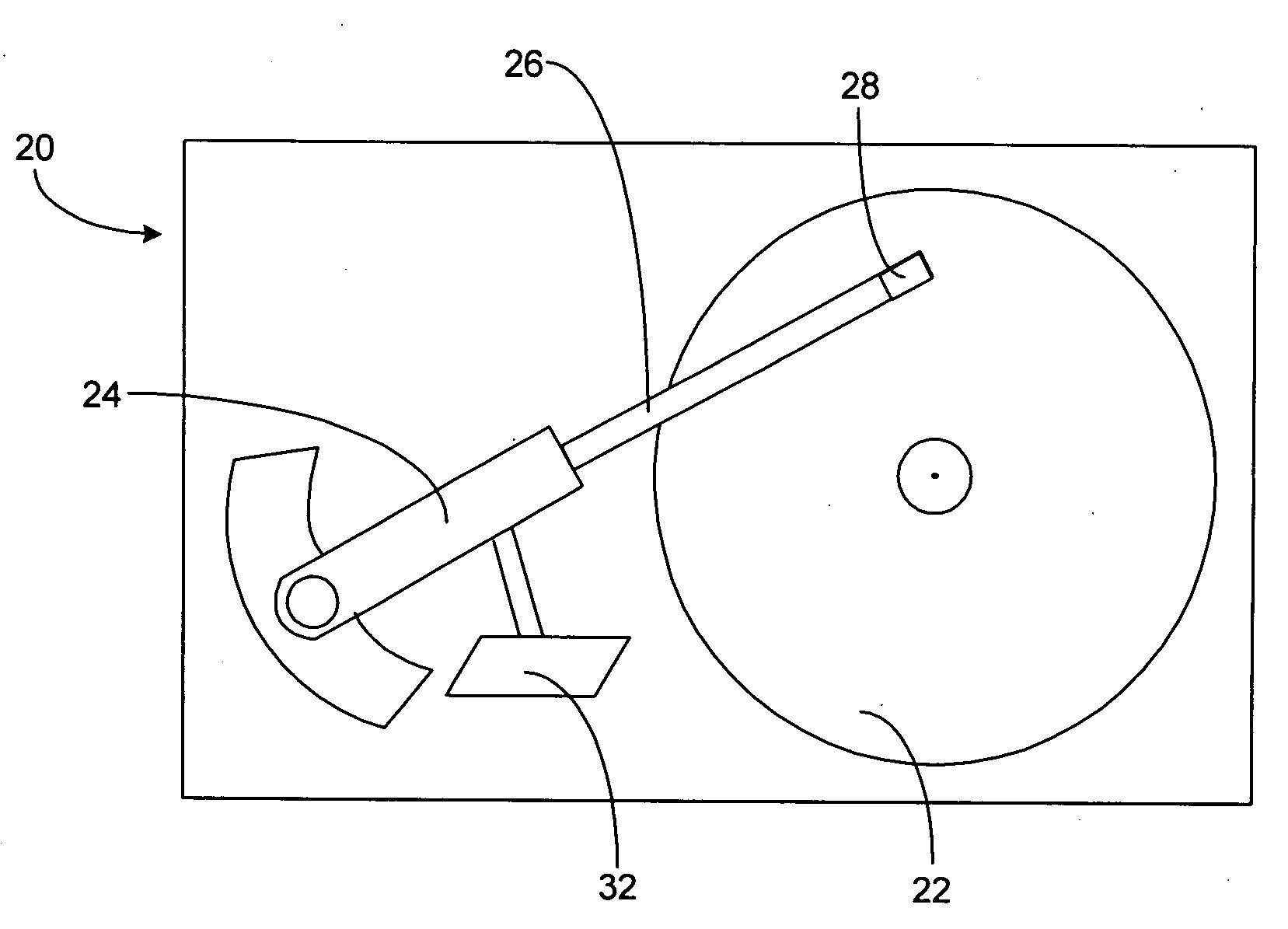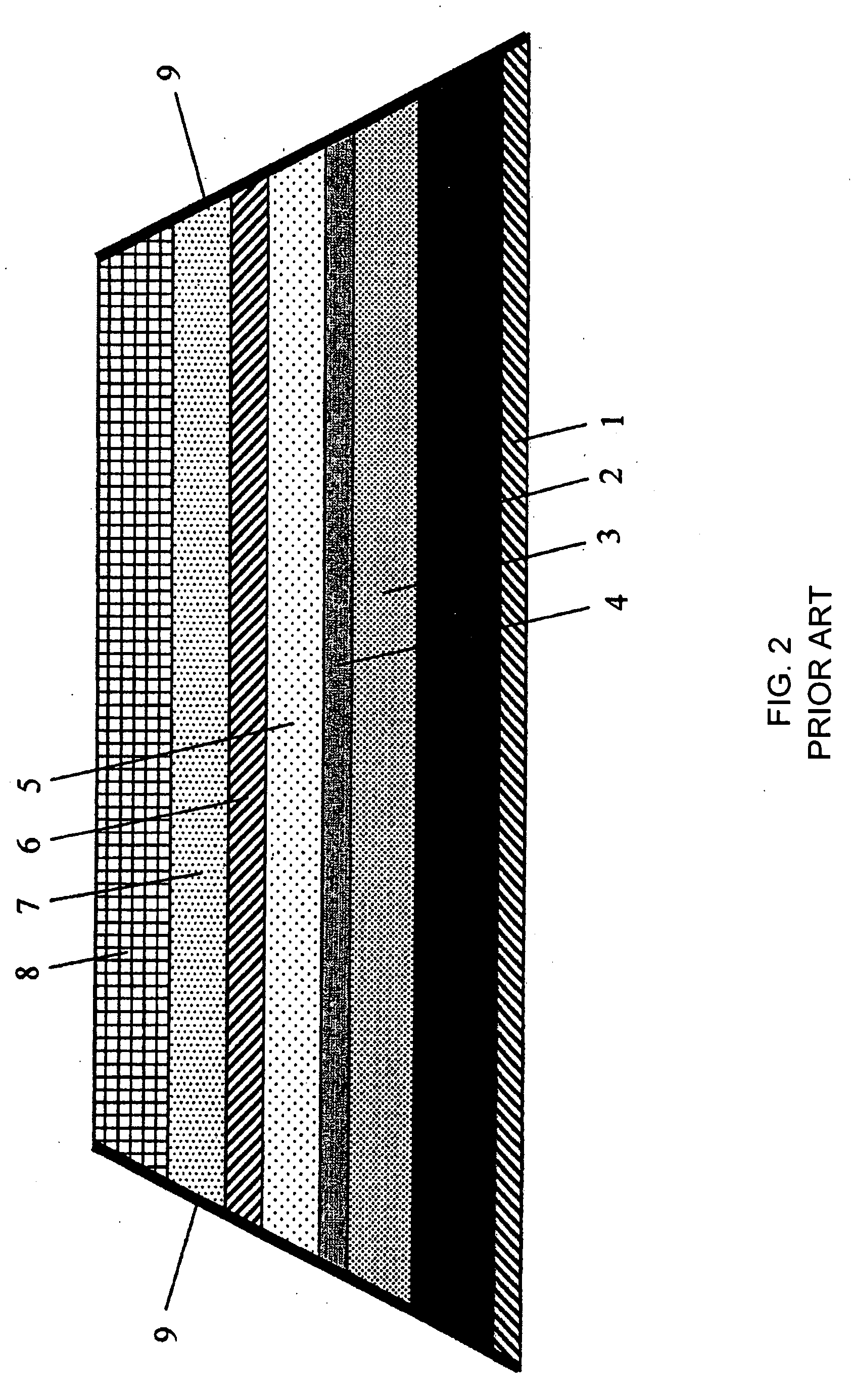Tunnel magnetoresistive element and manufacturing method thereof
a technology of which is applied in the field of tunnel magnetoresistive elements and manufacturing methods thereof, can solve the problems of poor film surface smoothness after formation, inability to obtain stable anti-ferromagnetic exchange coupling between the first and second pinned magnetic layers, and inability to obtain excellent crystal structure of mgo, etc., to prevent deterioration of film characteristics, improve performance, and excellent anti-ferromagnetic exchange coupling
- Summary
- Abstract
- Description
- Claims
- Application Information
AI Technical Summary
Benefits of technology
Problems solved by technology
Method used
Image
Examples
first embodiment
[0031]FIGS. 3(a)-3(d) show a method of manufacturing magnetoresistive elements of the present invention. FIGS. 3(a)-3(d) are cross-sectional views of the magnetoresistive element. As shown in FIG. 3(a), an underlayer 1 of Ta is formed on a substrate 10 made of Al2O3—TiC, and an anti-ferromagnetic layer 2 of Ir—Mn alloy is formed subsequently. Here, the anti-ferromagnetic layer 2 has surface roughness higher than that of the anti-ferromagnetic layer made of Pt—Mn alloy which is generally used. Accordingly, as shown in FIG. 3(b), the first pinned magnetic layer laminated on the Ir—Mn alloy also has higher surface roughness because of the influence of the Ir—Mn alloy as the underlayer.
[0032]Thereafter, the surface of the first pinned magnetic layer is smoothed with the gas cluster ion beam or inverse sputtering method as shown in FIG. 3(c). Next, as shown in FIG. 3(d), a non-magnetic intermediate layer 4 of Ru, a second pinned magnetic layer 5 of Co—Fe alloy, a tunnel barrier layer 6 o...
second embodiment
[0033]When the tunnel magnetoresistive element of the present invention is used in the magnetic head, the tunnel magnetoresistive element is laminated, for example, after an insulating layer made of Al2O3 and a shield layer of NiFe are laminated on Al2O3—TiC of the substrate. This is also true in the
[0034]When Al2O3 is used for the tunnel barrier layer, any influence is applied on the magnetoresistive characteristic thereof, even if the second pinned magnetic layer as the underlayer is smoothed with the gas cluster ion beam or inverse sputtering method, because Al2O3 forms an amorphous layer. However, when MgO is used as the tunnel barrier layer, excellent magnetoresistive characteristics cannot be obtained when the second pinned magnetic layer is used as the underlayer and is smoothed with the gas cluster ion beam or inverse sputtering method, because the crystal layer and crystal structure of MgO is important to obtain excellent magnetoresistive characteristics.
[0035]However, acco...
PUM
 Login to View More
Login to View More Abstract
Description
Claims
Application Information
 Login to View More
Login to View More - R&D
- Intellectual Property
- Life Sciences
- Materials
- Tech Scout
- Unparalleled Data Quality
- Higher Quality Content
- 60% Fewer Hallucinations
Browse by: Latest US Patents, China's latest patents, Technical Efficacy Thesaurus, Application Domain, Technology Topic, Popular Technical Reports.
© 2025 PatSnap. All rights reserved.Legal|Privacy policy|Modern Slavery Act Transparency Statement|Sitemap|About US| Contact US: help@patsnap.com



